Arctic Grayling are really cool fish and are known as the sailfish of the salmon species. Native grayling are found in rivers, streams, and lakes in Alaska, Canada and Montana, and Michigan. Many other states have introduced Arctic Graying. These fish are fun to catch using light spinning tackle and fly gear. Arctic Grayling are known for rising and biting dry flies which makes them a very popular sportfish.
Graying is slow-growing fish that only grows about one inch per year and can live to be over 30 years old. Arctic Grayling have soft mouths so it is important to use single barbless hooks and not fight the fish too aggressively.
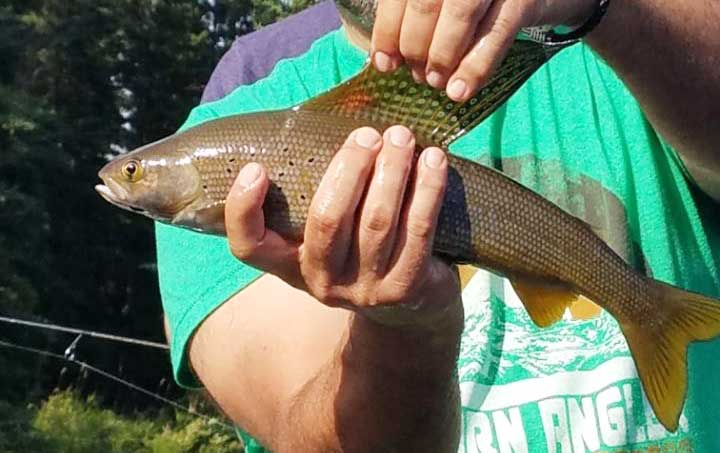
Grayling has a strong bite in the summertime and naturally feeds on flies, insects, salmon eggs, and small fish such as baby salmon. They are not picky when it comes to what they will try to eat but I noticed that they approach the bait slowly and nip at it. They keep coming back if they miss the bait so do not give up if a grayling hits but does not get hooked.
Common artificial baits for grayling small spinners, lightweight jigs, dry flies, and wet flies. Dry flies work best late in the summer when there are lots of insects around. Below I will cover the most common lures and baits used to catch Arctic Grayling.
Here Are the Best Grayling Fishing lures, baits, and jigs.
1. Pumpkin Seed Gold Rooster Tail
The pumpkin seed rooster tail is 1/8-ounce and has a gold blade and single hook. The 1/8 ounce size is perfect for grayling. The single hook makes it league in most streams. Smashing the barb down with pliers will make the hook barbless. This is a good idea because grayling have soft mouths and less damage will likely be done to the mouth of the fish.
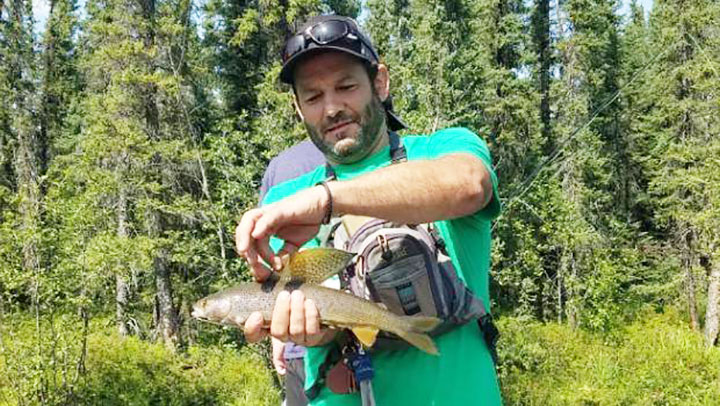
In the picture, my friend Pat caught a nice grayling on a fly. This was done fishing on a small boat in a river near Fairbanks Alaska.
2. Glitter Flame Rooster Tail
Glitter Flame or fluorescent red color rooster tails come in 1/16 ounce and 1/8 ounce sizes. These spinners work great for grayling and are very close to the color rooster tail I was using in the “how to catch trout video shown at the bottom”. This lure does use a treble hook. A treble hook is not ideal for an easy fish release but works well to catch fish. Smashing the barbs down on the hooks would be a good idea so the fish is easier to release. Rooster Tail spinners also work great to catch trout.
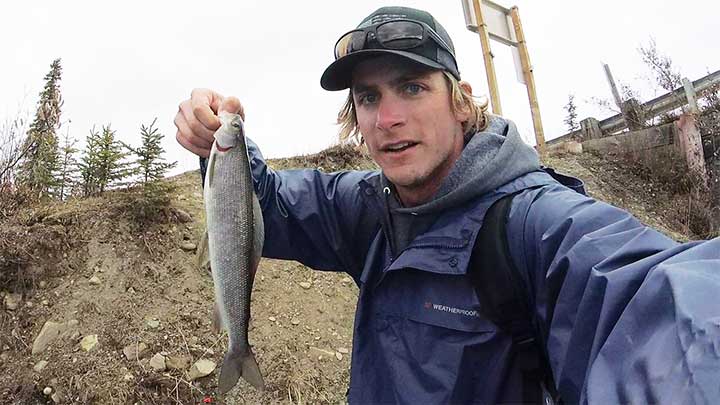
In the picture is nice grayling I caught on a glitter flame rooster tail spinner. I was fishing in a river located on the Denali Highway.
3. Mepps Size Zero Spinner
Mepps size 00 is an ultralight 1/18 ounce spinning lure with a single hook. This works well in small streams where long-distance casting is not needed. There is also a Mepps 1/12 ounce size zero wooly worm spinning fly in gold and brown or silver and black that both work great for grayling.
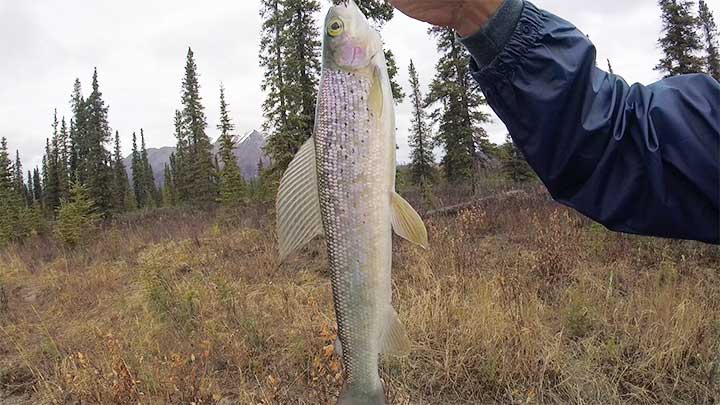
In the picture is small grayling I caught on a glitter flame rooster tail spinner. I was fishing from shore in a river located near the Denali Highway.
4. Small Jig Trout Magnet
This trout magnet kit comes with 8 jig heads that weigh 1/64 once and have size 8 hooks. Also in the kit is 70 grub bodies in 7 color patterns. The gold jig with the gold body is my favorite trout lure.
These are can be fished with similar methods to wet flies by drifting them downstream. When drifting the lure it can help to have it suspended on a float so the jig stays just off the bottom. I typically try to pull the jig with short slow jerks about two feet in front of the fish. The trout magnet jig frequently out fish all other baits and catches fish when other lures are not working.
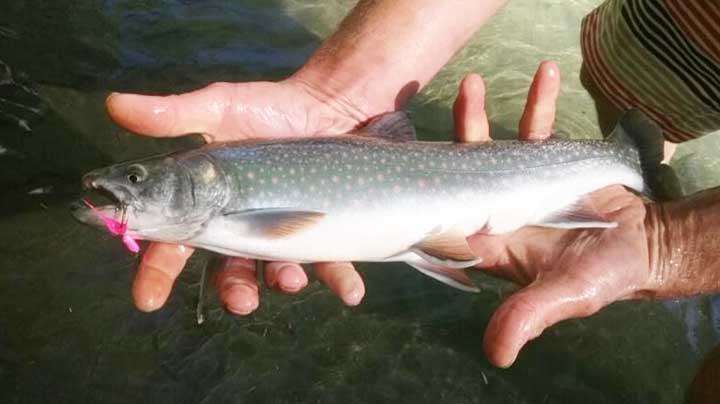
The pictures above shows a Dolly Varden caught with a pink rooster tail spinner. Dolly Varden trout can often be caught in the same streams as grayling. This fish was caught in a stream near Juneau Alaska.
5. Panther Martin Single Blade Lure
The silver blade with yellow body panther martin spinner weight is 1/16 of an ounce in size 2. This sonic spinner has single hooks that make it legal to use in all streams as long as they are not listed as fly-only streams. The convex blade has a slight wobble to it as it travels through the water which makes sonic vibrations that attracts the attention of trout and grayling.
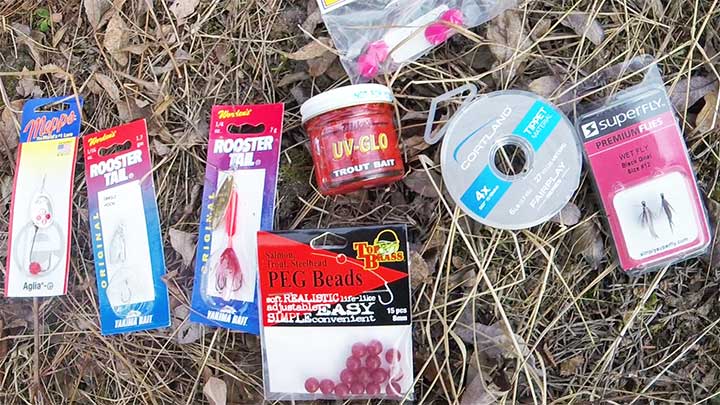
The picture above shows the assortment of lures I had when fishing for arctic grayling in Alaska. This included single-blade spinnerbaits, peg beads, and dry flies. I had salmon eggs but did not use them because I did not know if it was legal on the streams I was fishing. I did not have a fly rod but had some 4x tippet so I could tie flies on my spinning rod.
6. Comet Mino Mepps Spinner
The Mepps comet mino spinner comes in size 1 which is 1/6 of an ounce and works great for grayling. Other good sizes are size 0 which is 1/9 of an ounce and size 00 which is an ultra-light spinner weighing just 1/18 of an ounce. I like being able to cast far so size 1 or size 0 is what I would recommend. The spinner blade attracts the fish and the erratic motion of the bait appears as an injured fish. The trout pattern comet mino is one of the best for graying because it looks like a salmon fry. This lure does use a treble hook so make sure that is legal in the water being fished.
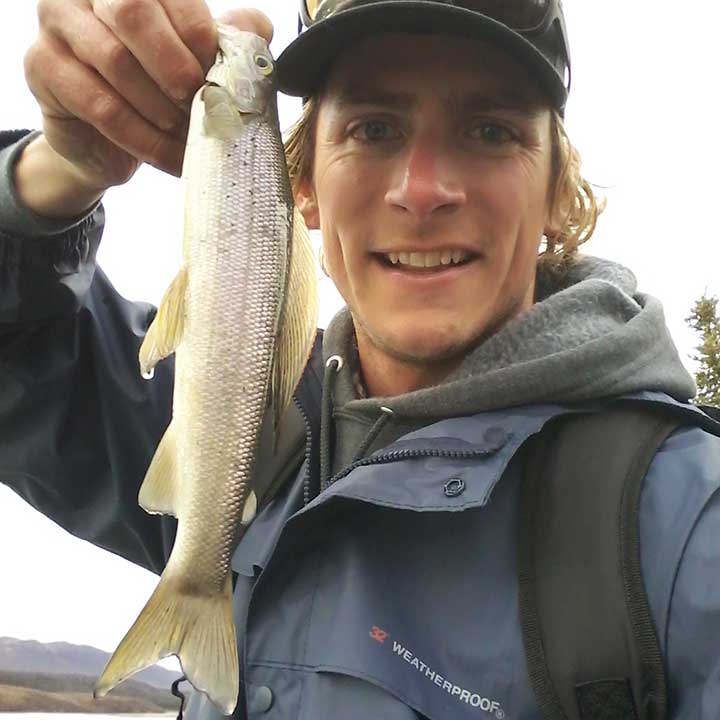
7. Trout Beads
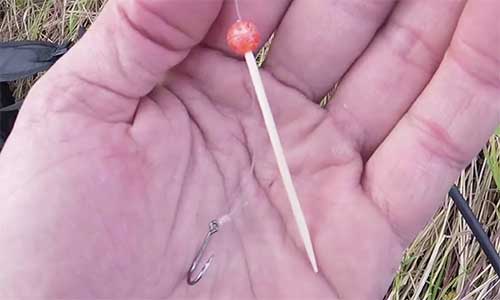
Salmon eggs would work great for grayling but most streams do not allow real salmon eggs to be used. The solution is to use hard trout beads. The bead is held at least two inches above the hook for legal reasons. The bead is held in place by pushing the tip of a toothpick into the bead and breaking off the remaining toothpick. Some people use rubber bands but a toothpick is much easier in my experience.
Trout Beads
Trout beads assorted Alaska pack. Size 6 mm, 8 mm and 10 mm beads. As salmon eggs develop into alevins the color and size of the egg change. It is best to try and match the natural egg size and color that is most abundant in the stream.
If the salmon or trout are spawning in the river being fished using salmon eggs or beads would be a good option. Depending on the location of the stream you may be able to catch rainbow trout, Dolly Varden and salmon with these beads as well.
In many areas fishing for grayling with salmon eggs is not allowed but you can always use trout beads two inches up from the hook. Trout beads can even be used in fly-only streams in many cases.
Gamakatsu Trout Hooks
Gamakatsu size 10 single hooks are a good size hook for grayling. Ten hooks come in each pack and they can be purchased in red or black. Hooks from size 4 – size 14 are available with size 14 being the smallest. The hooks should be fished barbless which can be achieved by crimping the barb down with a pair of pliers.
Toothpicks For Grayling Bait
1000 wooden toothpicks in two clear storage containers. These toothpicks work well to hold the trout beads in place. The toothpick holds the bead in good even when it is dry. When it gets wet the wood expands and holds the bead even tighter. The alternative is to use rubber bands which I find more difficult to use.
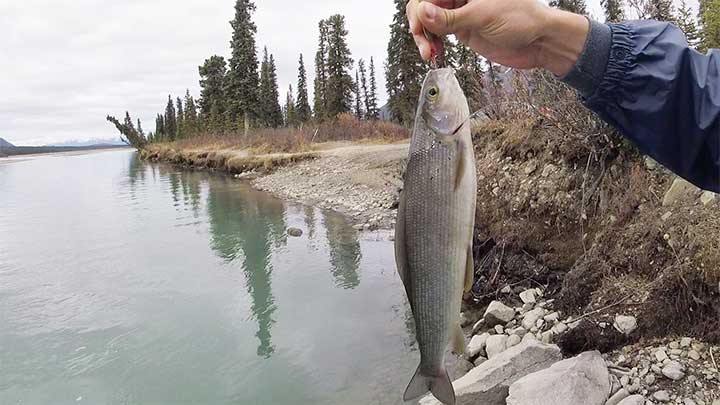
In the picture is small grayling I caught on a small rooster tail spinner. I was fishing from shore in a river located on the Denali Highway in October. There were many lakes and rivers that were only a short hike away to start fishing. If there is a small pound without a stream that flows into the pound it is unlikely there will be grayling. Only fish a small lake or pond if a stream connects to the water at some point throughout the year.
8. Prince Nymph Fly
This BH Prince Nymph fly set comes with 12 flies. There are three flies in size 12, size 14, size 16, and size 18. This weighted fly with a bead head and is intended to catch grayling beneath the surface. The surface bite of streams is not always active and submerged lures will catch more fish during these times. This fly can be drifted in current past fish. The fly is intended to look like a small insect larva. The nymph flies are on the small side but are also one of the most widely used flies that consistently catch fish.
9. Red Humpy Fly
The red humpy fly comes in size 8, size 10, size 12, size 14, size 16, and size 18. Size 8 being the largest and size 18 is the smallest. If you ask people what fly is best for grayling the red humpy will come up over and over again. This fly was made for grayling and is known for catching the large 20 plus inch trophy fish. Sometimes this fly is also called a Goofus bug. This dry fly looks like many natural insects that live near mountain streams.
10. Mosquito Fly
Mosquito fly set comes with six flies all in size-12. The mosquito fly is probably the most common fly to use for grayling. This is a dry fly and works great on gently flowing mountain streams and rivers. This is a great general purpose fly that also works well on the still waters of mountain lakes. The surface of streams and rivers comes alive at times and that is when this is a perfect fly to use. When trout and graying are feeding on insects at the surface a dry fly is going to catch the most fish and is a really fun way to catch them.
11. Black Gnat Dry Fly
Feeder Creek black gnat dry fly set comes with 12 flies all in one size. The size options include size 10, size 12, size 14, size 16, size 18 and size 20. These black gnat flies are very similar to the mosquito fly. The black color of these flies allows them to out fish the mosquito fly in some conditions. This is a dry fly and is intended to catch fish feeding near the surface. Both mosquito flies and gnat fly can come unraveled easily if not tied properly. These flies are professionally tied by professionals with 30 years of experience.

Denali national park is another popular attraction in areas where grayling can be caught. Convince the wife or girlfriend that you are going on a sightseeing trip with her, not a fishing trip. When I was there it was too cloudy to see the summit but driving the Denali highway was beautiful and I saw lots of wildlife including caribou.
12. Trout Flies
A 120 piece fly kit with box. Some flies included are the Adams, black woolly bugger, elk hair caddis, gnat, and stimulator fly. Try and match the hatch and use a fly that will work for the current fishing conditions. Having a large assortment of wet and dry flies allows different presentations offered until you find one the fish will take. Once you get dialed in on the stream it makes for a great fishing experience.
In the video below I show how to catch grayling and trout. I was fishing for grayling on the Denali Highway and was also fishing for Jumbo rainbow trout in the Kenai Peninsula in Alaska. The stream I stopped at was loaded up with grayling and they would strike or follow my lure on most casts. There was also smaller grayling near some root structure in the water.
How to Catch Arctic Grayling
Arctic grayling can be caught in mountain lakes and streams. Grayling are typically caught with artificial baits including small spinners, lightweight jigs, wet flies, and dry flies. They can be easily caught using a spinning rod and spinning reel. When using fly fishing gear a size 4/5 reel is typically used with a 4/5 weight rod. The hardest part of catching grayling is finding them. They mostly live in remote streams, rivers, and mountain lakes. Grayling are not huge fish but catching them in clean, quiet, and beautiful surroundings is what makes fishing for grayling so appealing.
Frequently Asked Questions
Where can I fish for arctic grayling?
Native grayling can be found in Northern Michigan, Montana, Idaho, Canada, and throughout most of Alaska. Grayling has also been introduced in areas of New Hampshire, Wisconsin, Vermont, Arizona, Utah, Colorado, Wyoming, California, Oregon, and Washington. In these areas graying are found in watersheds and mountain drainage streams and lakes. The Alaska state record grayling was caught in the Seward Peninsula. The fish was 23 inches long and weighed 5 pounds 1 ounce. The majority of registered trophy grayling caught in Alaska come from the Ugashik Lake and river system of Bristol Bay.
What kind of fish is a grayling?
A grayling is in the same family as salmon and lives in cold water streams and lakes. It has a large dorsal fin and is sometimes referred to as the sailfish of the north or sailfish of the salmon. A grayling is very similar to an Arctic grayling with the main difference being slight variations in dorsal and anal spines. Some grayling live in streams and spawn in streams, others live in lakes and spawn in lakes, and some live in lakes and spawn in streams.
Is arctic grayling good eating?
Arctic Grayling is a good eating fish with meat that is white and flaky similar to a trout. The smaller grayling taste better than large grayling. Grayling have long lifespans over 20 years so catch and release practices are encouraged. Keeping fish in the 10-12 inch range are the best for eating. In some areas where grayling are stocked up to ten grayling can be kept per day. Grayling are also raised commercially for food in Northern Alaska.
What do grayling bite on?
Arctic grayling eat insects, insect larvae, fish eggs, small fish, and crustaceans. Grayling are aggressive feeders and will bite most lures and baits. They are known for rising and biting on dry flies which makes them a very popular sportfish. Other common lures used to catch grayling include small jigs, wet flies and spinnerbaits. Typical insects that grayling eat include caddisflies, stoneflies, mayflies, and black flies. Imitations of these are all good fly options to use for grayling.
How long do arctic grayling live?
Arctic grayling can live up to 32 years and grow to a maximum recorded length of 30 inches and 8.4 pounds. It is not uncommon for adult grayling to be 20-30 years old. Average adult grayling are 10-18 inches. In order to be considered a trophy grayling, the fish must be over 18 inches or weight 3 pounds.
Do grayling have teeth?
Yes, grayling has small fine teeth on both the upper and lower jaw. Their teeth are much smaller than trout’s. The mouth of a grayling is very soft and tears easily. The fish fight hard and the angler should not apply lots of drag to the fish. You can lip a grayling like a bass without hurting your fingers but this should not be done because their mouth is so soft and could damage the fish.
What is the life cycle of a grayling?
Grayling start as small eggs 1/10 of an inch in length. They hatch in about three weeks and reach a length of 2-4 inches by the end of summer. It takes 4 to 7 years for a grayling to spawn for the first time. At this point, they are about 10 inches in length. Going forward the fish only grow about 1 inch per year. Female graylings lay between 1,500 and 30,000 eggs depending on the size of the fish.
Are grayling trout?
No, grayling are not trout. Grayling, trout, and salmon all come from the Salmonidae family. However, they all have different genus and species. These fish can often be caught in similar areas with similar baits. Grayling can survive in streams that have low dissolved oxygen levels. This allows them to survive beneath the ice in areas where most other fish would die.
Captain Cody has worked on charter fishing boats in the Florida Keys, Virgin Islands, and Alaska. Growing up in Pennsylvania Cody has also done extensive freshwater fishing including bass fishing tournaments. Cody strives to provide detailed information about the best fishing gear and tactics to help both novice and experienced anglers have a more productive and enjoyable time on the water. Cody also has a background in aerospace engineering and neuroscience but really only takes pride in being good at one thing and that is fishing!

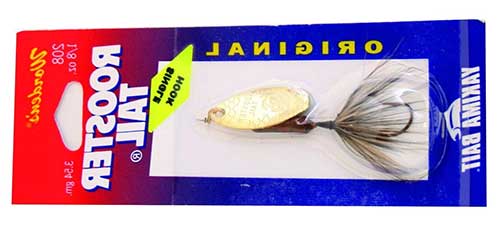
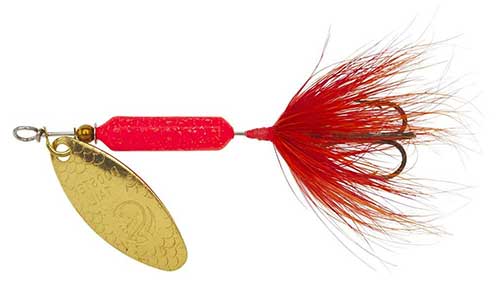
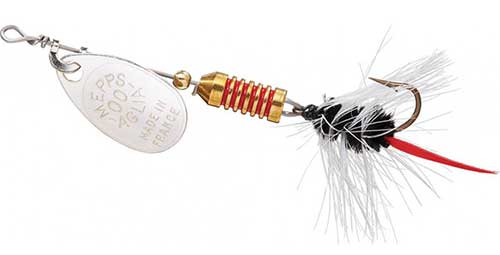
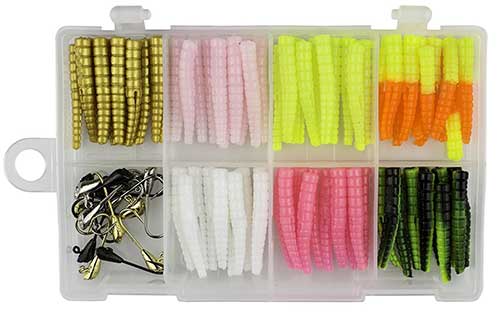
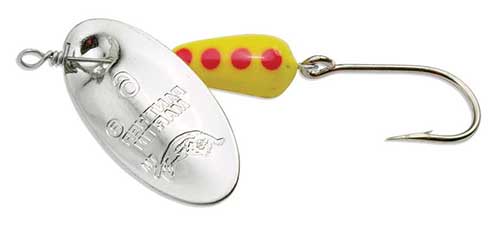
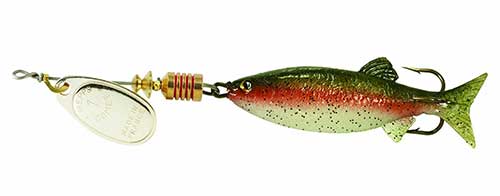
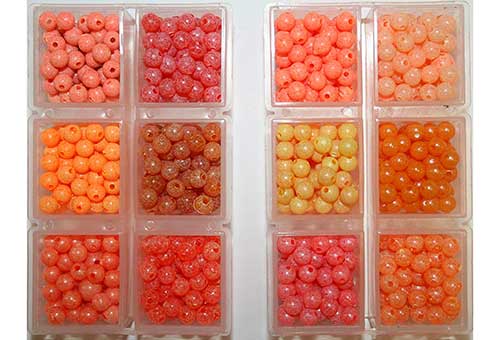
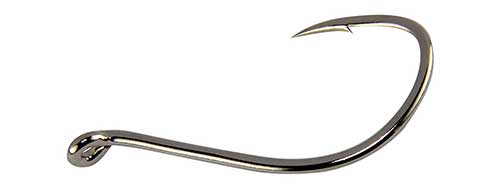
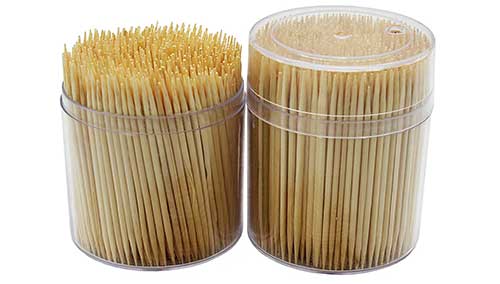
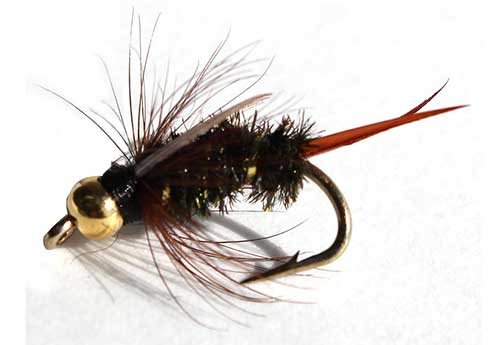
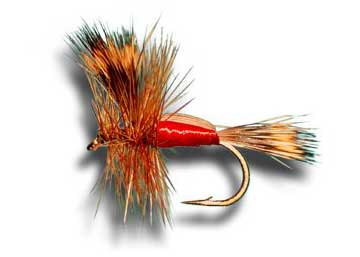
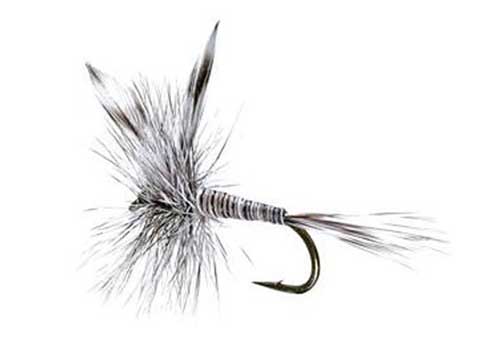
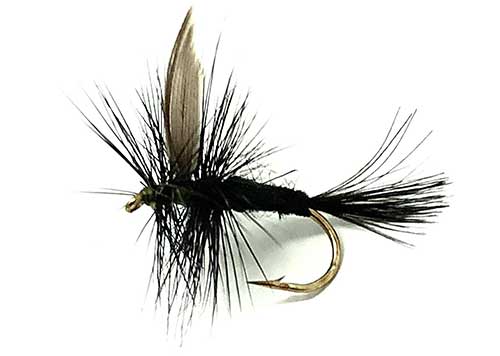
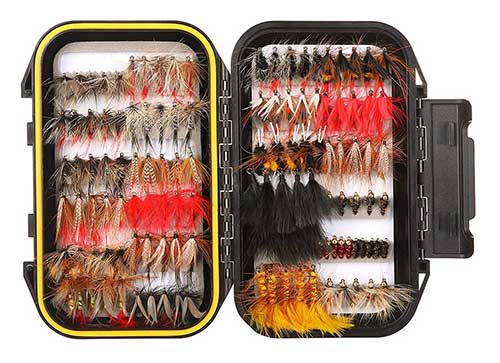
Great article – thanks. Im headed to AK next June and the lake next to cabin loaded with grayling. Nice stripers in the small pic by the way,,,